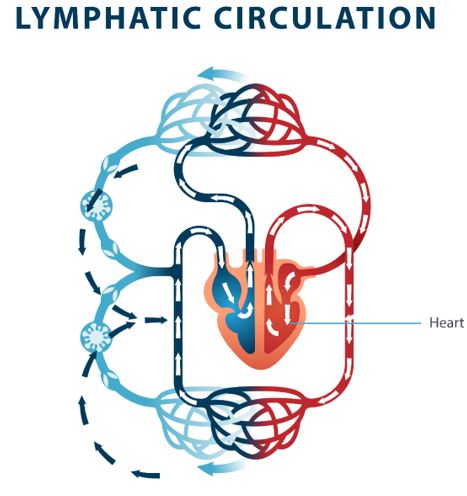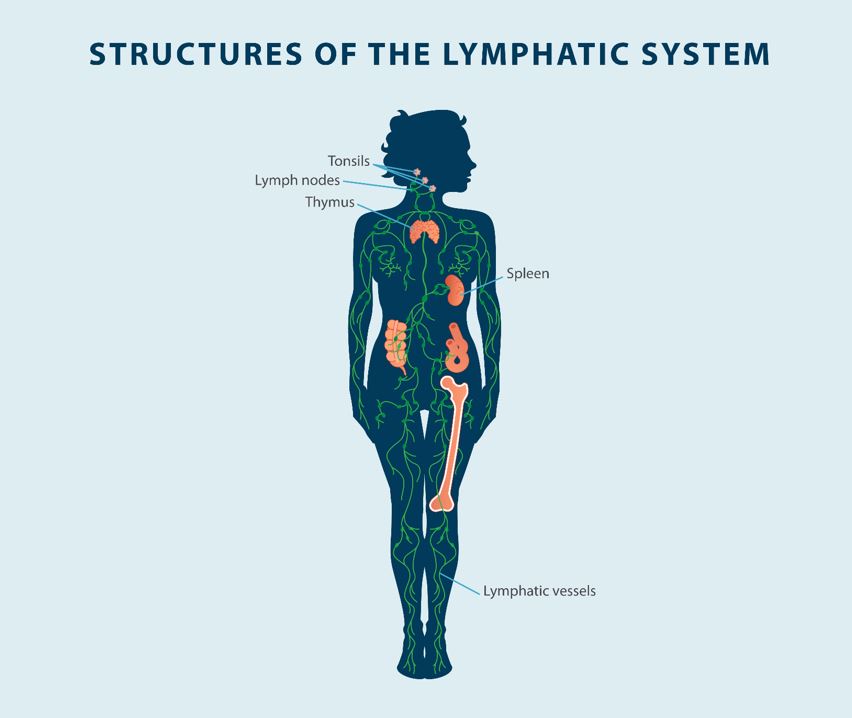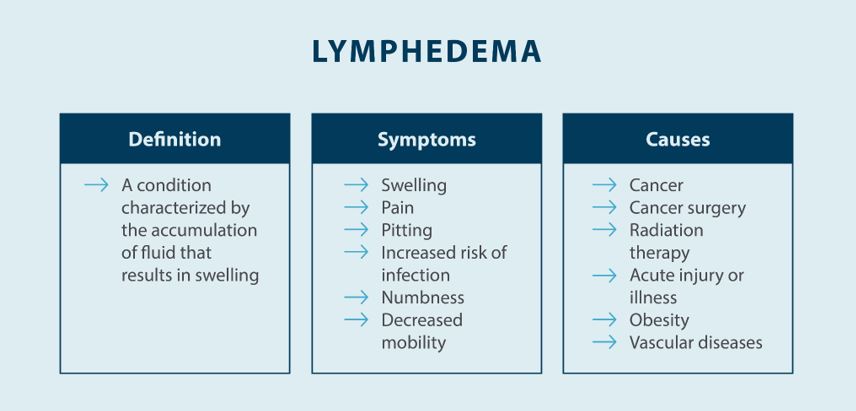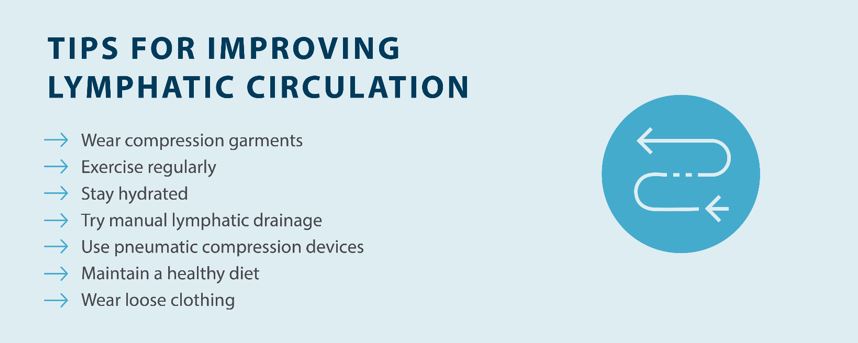How Does Lymphatic System Circulation Work?
As your heart beats, it pumps blood throughout the body and is transported via large arteries, smaller arterioles, and smaller blood vessels known as capillaries. The walls of these capillaries are very thin and, as a result, blood plasma can leak out of the vessels and into the body tissues. The elements of the blood plasma that seep into the body tissue are known as interstitial fluid or extracellular fluid, which contain oxygen, glucose, amino acids, and various other nutrients.

As fluid escapes the capillary walls it collects in the body’s tissues. For the body to maintain a healthy fluid balance, the lymphatic system picks up the excess fluid—known as lymphatic fluid—to filter and return good fluids to the bloodstream. Your lymphatic system collects this leftover fluid, and it passes through your lymph nodes, where toxins and other potentially harmful bacteria are filtered out.
Once the lymph fluid has been filtered, the lymphatic flow returns the fluid—now containing broken-down bacteria and waste products—to the bloodstream. The broken-down waste products in the blood are then removed by the liver or kidneys and leave your body via stool or urine.
In some cases, your lymph nodes might not immediately break down harmful substances and instead trap them for certain periods of time. This is why you may notice your lymph nodes swell up and experience soreness when you become sick or deal with an infection.5
A healthy lymphatic flow is essential for maintaining your overall health and fighting off cancer. This is because when cancer forms at one site, it can travel across the body through blood or lymph fluid. Lymph nodes can filter out cancer cells and other foreign substances, preventing them from spreading to vulnerable areas in the body. But, at the same time, cancer cells can spread to—or even originate from—the lymph nodes themselves, causing the lymph nodes to swell. Thus, if you become aware of swollen lymph nodes, it is important to seek treatment and consult with your doctor.



